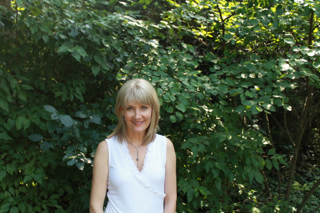Don’t judge a practice by its posture
By Cathleen Margolin, Ph.D.
“If you do not change direction, you may end up where you are heading.” —Lao Tzu
 Sometimes during yoga class, I peek at my neighbor to see whether my right or left foot is supposed to be forward. It’s helpful and probably one of the only bits of reliable information that I can gather about a fellow yogi’s practice. Otherwise, I have no idea what my classmates are practicing.
Sometimes during yoga class, I peek at my neighbor to see whether my right or left foot is supposed to be forward. It’s helpful and probably one of the only bits of reliable information that I can gather about a fellow yogi’s practice. Otherwise, I have no idea what my classmates are practicing.
Sure, I might be able to make out a body moving in and out of Downward Facing Dog, Mountain pose, or Warrior Two, but my vision is not potent enough to decipher what is actually being practiced. Thank goodness “staying on your mat” is highly recommended. It’s hard enough for me to determine what I’m practicing moment to moment myself, and I have the inside track.
The problem is that what we intend to practice and what we are practicing isn’t always the same thing.
Maybe it seems strange to question what is being practiced during a yoga class, but the physical movements (asanas) are only a portion of what occurs. It doesn’t matter whether the class is held in a gym that emphasizes yoga as exercise, or in a studio dedicated to tending to body and spirit. It’s not about where we gather or even how we are instructed, but what we bring.
And what we bring with us wherever we go are our habits—both healthy and unhealthy. Habits manifest in every way we are able to express ourselves: physically, verbally, socially, and, the most wily, mentally. The quality of our experience of life is dependent on our mental constructions. Our minds are capable of revealing the freedom and yes, the joy beneath our neuroses and mental habits. Our minds can also add insult to injury, whip up our egos, and sadly, increase our suffering.
As a clinical psychologist, I constantly hear how samskaras (impressions or habits of the mind) create difficulties in the lives of my patients. Step by step, we go through the process of identifying mental tendencies. Once we become aware of what is present, we can begin to improve our relationship with habitual thoughts or emotions.
Of course, my patients’ minds all have something in common. We all have mental habits that can cause suffering for ourselves or to others.
Fortunately, we are not destined to be enslaved by emotion or thought. When we find our composure—often aided by a meditation, yoga, or other introspective practice—the limiting quality of our most despised, cherished, or neutral mental habits is revealed. Also revealed is a glimpse of the potential vastness of our inner and outer worlds.
A yoga class is an ideal setting to look at what’s happening inside. Perhaps we set out to follow the teacher’s instruction: focus on breath and movement. But as our minds are apt to wander, more than the breath and movement become available for consideration. And so, we return focus to the breath and asana over and over again. And just as reliably, the mind volunteers other information over and over again.
These are the natural fluctuations of the mind. It’s useless to push, pull, or fight them in order to find calm. Instead, we can courageously observe what is present. Fair warning: who knows what will be illuminated. It’s not always pretty, but looking didn’t create whatever is revealed. The idea is to lean in closer to whatever we find.
We may notice grasping, avoiding, comparing, rushing, or resisting—just a few of the mental patterns that can come and go in a perfectly normal mind. Back and forth, we notice what arises and encourage ourselves to accept that, in this moment, a certain thought, emotion, or sensation is present.
The practice of observing our mind can be enough to set us free from these superficial mental loops. There’s nothing to be done when we are ignorant, distracted, or sleeping through life. But when we practice awareness, on or off the mat, we invite transformation.
























No Responses to “I don’t mean to pry, but what are you practicing?: Lean in and transform”